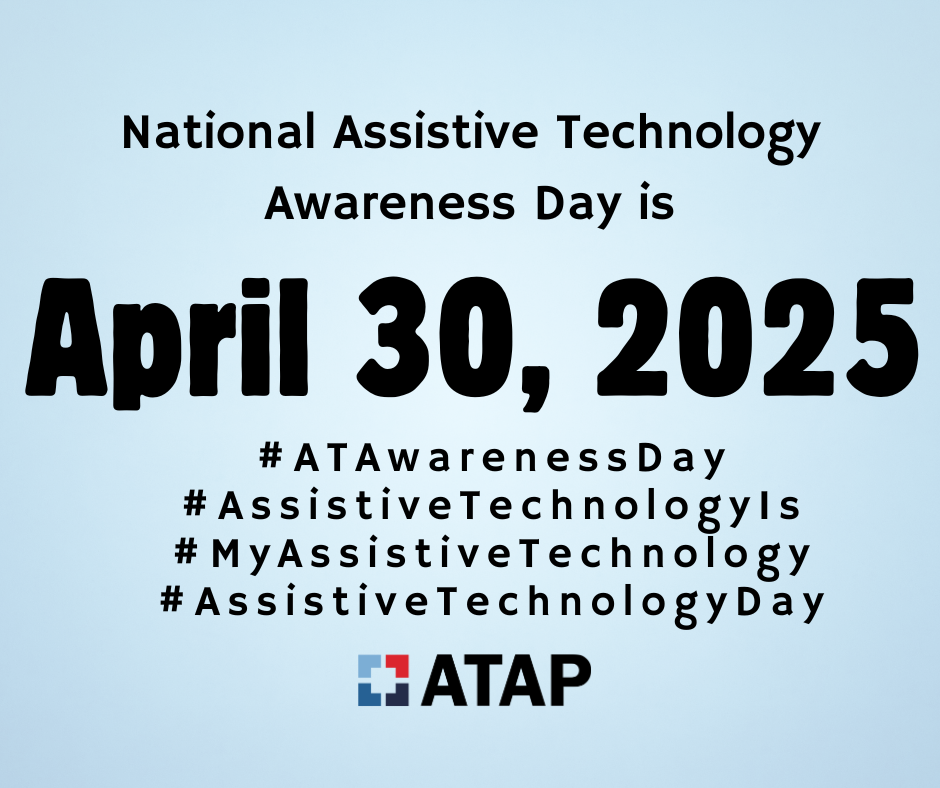
National AT Awareness Day is Wednesday, April 30. This post is dedicated to everyone who prioritizes individual needs when finding or recommending assistive technology.
“I know what’s best for you.” As in “Because I said so.” As in something frequently said by parents and rarely appreciated by children. And, unfortunately, not always a true statement—especially where individual goals and challenges are involved.
What’s worse is having someone else imply that they know what’s best for your child. Or for you as an adult. Ask anyone who’s ever tried to get assistive-technology (AT) recommendations from a doctor, only to be quickly handed a prescription for the same hearing aid/communication app/wheelchair that “everyone” uses. Often after (or while) trying to explain that that option has already been looked at and found wanting.
On top of which, lived experience is rare among the doctors doing the prescribing. A 2019 study, published by the American Medical Association, found that only 3 percent of practicing physicians have disabilities themselves.

With Individual Needs, Experience Makes Experts
“Nothing about us without us.” Fortunately, more non-disabled professionals now understand the value of that principle.
“I know the tech, but families and therapists know their children and clients,” says Daryn Ofczarzak, speech language pathologist at Easter Seals Greater Houston. “I always stress working as a team to find what’s best for the individual. My best advice is to come into the [BridgingApps AT Lab] and try as many different options as possible. Even if we don’t have exactly what the client needs, we can help them note product features that work for them, so they can use that list of features to find the best fit elsewhere.”
Daryn also has shown the AT Lab to pediatric residents from Texas Children’s Hospital, helping them discover:
- How different AT options work;
- What learning curves are involved; and
- How to find the best options for each patient.
Such hands-on education is important for getting more doctors focused on individual needs, not just on “the way it’s done.”
More on the Team Concept
To be fair, “rush recommendations” aren’t always the doctor’s fault. Doctors today not only have to keep up with hundreds of patients; they have to play by the rules of modern corporate medicine, which include piles of paperwork and strict time limits for non-emergency appointments. Your doctor may have the same frustration as you: being “outranked” by someone who insists they know best, despite lack of hands-on experience with the problem.
If a doctor really won’t or can’t see your point of view, you can always find another doctor. But whether you’re going for the first time or the fiftieth, remember that medical professionals are human too. Most of them will be helpful members of your AT team, if you’re a team player yourself.
- Do your homework: show up knowing what you definitely need and what questions you want answered. Bring a list for reference, and offer to leave a copy with the office.
- Listen to the doctor, just as you want them to listen to you. If you disagree with a recommendation, politely explain your point of view. (It helps to be concise and visibly confident.)
- Be polite to everyone else in the office. Every receptionist, nurse, and technician is a team member, an information source, and an advocate.
For More Information
- Leading the Way with Assistive Technology: Viva la Vida with A.T.
- National AT Awareness Day (Association of Assistive Technology Act Programs)
- Texas Technology Access Program

